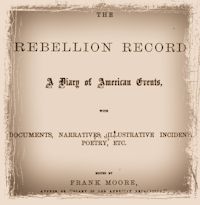October 21.—This morning the United States steamer Nansemond, Lieutenant R. H. Lamson, commanding, captured and destroyed the rebel steamer Venus, from Nassau to Wilmington, with a cargo of lead, drugs, clothing, coffee, and bacon for the rebels. The Venus was one of the very finest and fastest steamers engaged in running the blockade. She was two hundred and seventy feet long, one thousand tons burthen, and had the finest engines of any steamer in this trade, and could run sixteen knots per hour. The Nansemond fired one shell through her foremast, another burst in the centre, a third passed through forward, killing one man, (this is the first man killed running the blockade,) and a fourth struck under the guard, near the waterline, knocking in an iron plate, which forced her to run ashore to keep from sinking. She was boarded so quickly that her captain, officers, and most of her crew were captured. As she could not be got off, she was entirely destroyed, under a heavy fire from the rebel batteries ashore.— (Doc. 204.)
—Warrenton, Va., was entered and occcupied by the National cavalry.—An engagement took place at Cherokee Station, Alabama, between the National forces under General Osterhaus, who was moving eastward from Corinth, and the rebels under Generals S. D. Lee, Roddy, and Richardson, numbering over four thousand. The fight lasted an hour, when the rebels were driven back with severe loss.—(Doc. 205.)
—Opelousas, La., was entered by General Franklin’s column of General Banks’s army at noon to-day. The rebels made a stand at a point about five miles in front of the town, with a body of troops composed of infantry, cavalry, and artillery, but they were quickly driven from the field. At Vermillion Bayou, where the rebels held a strong position, an engagement might have been expected; but the threats made on their rear by General Dana’s forces compelled the rebel commander to divide his troops, and so weakened the force on the bayou, that it was easily turned.



